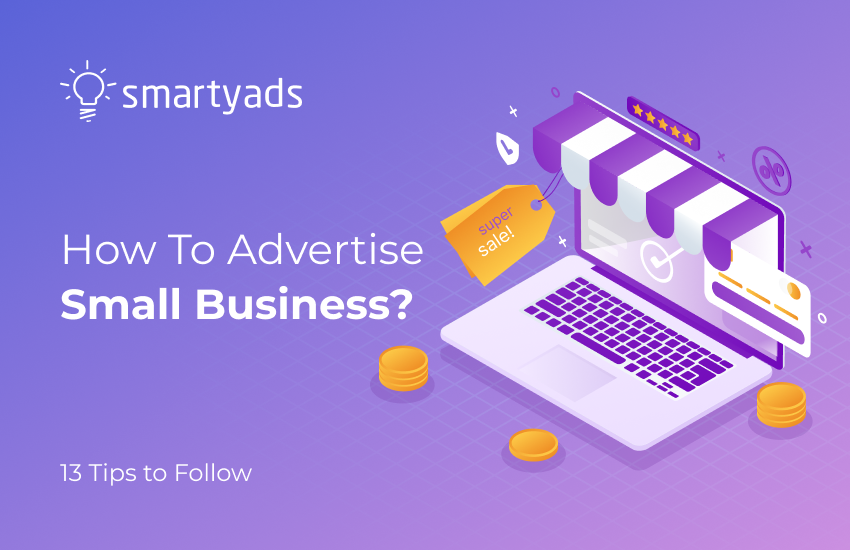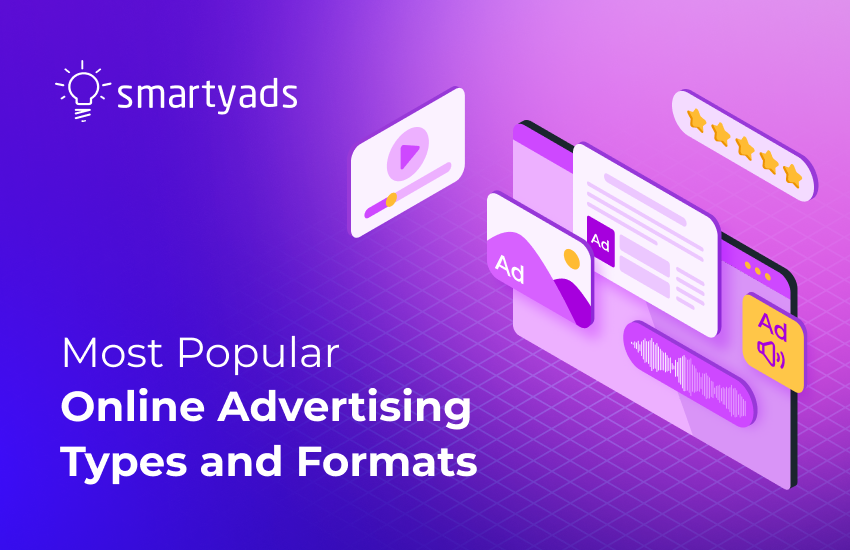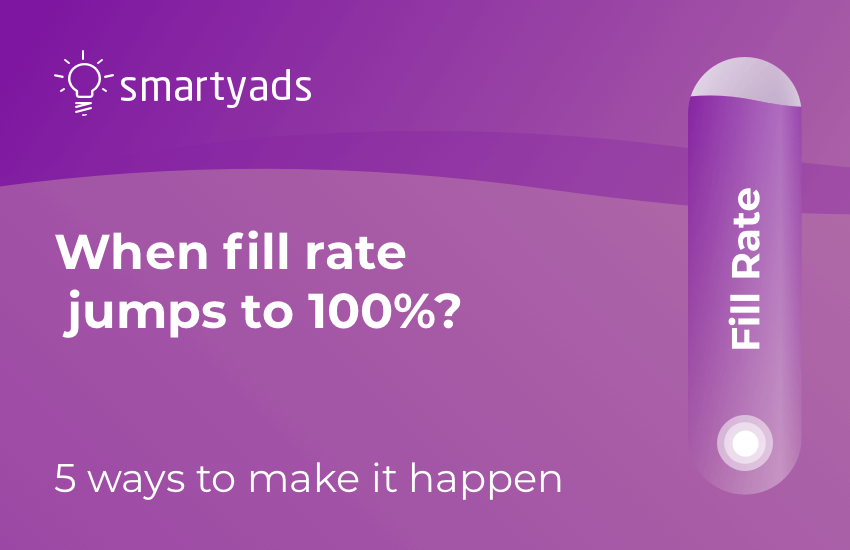In a world led by tech giants and multi-billion advertising empires, small business advertising can be quite challenging, especially if one wants to compete with larger companies.
Although your marketing budget might be somewhat smaller than that of bigger businesses, you can create effective business advertising campaigns with the right ideas and precise strategy regardless of your company's size.
Back in the previous century, the task of advertising small businesses would be chance-dependent. You'd spread your message through newspapers, radio, or other broadcasting channels, hoping to get customers among the general public. A shift to online programmatic advertising opened a new way to promote your business, as you can now define your target audience with the right message at the right time.
It has become much easier to get professional help to promote your business. You can instantly drive leads and sales, as well as improve ROI.
For those of you who'd like to try and start advertising your small business independently, we'd like to share some tips on promoting your business, even if your marketing budget is tight.

Tip #1: Pick the right channel and be good at it
When looking for the best way to promote your business, keep in mind that it is all about choosing priorities wisely. Managing dozens of media channels can be extremely tiresome for a small team. Still, the good news is you usually only need a couple of those to successfully promote your business online.
The general rule is to think about existing customers first — gather all the available data and try to answer the following questions:
- Who are existing customers, and what are they interested in? What are they searching for, and how do they do it?
- How do they spend time online?
- What are their favorite media channels and platforms?
- Which problem does your product or service solve, and how is it different from your competitors'?
These simple answers are essential and can give you lots of insights on how to promote your business before you even start building a strategy. They will also significantly narrow down the number of potential channels to your audience's most widely used ones. For example, B2B advertising is more effective on Twitter and LinkedIn, while B2C campaigns perform better on Facebook or Instagram.
Focusing on just a couple of channels will help you distribute resources strategically, which can be a big game-changer in regard to managing your time and money.
Once you've picked a channel, it is much easier to master your campaigns and become an expert around the chosen platforms. With carefully planned campaigns, even a small investment can play out really well and increase your profits dramatically. Over time you'll get to know well what works specifically for the business; thus, you'll be able to define the best way to promote your business.
Tip #2: Use email for business advertising
Email marketing is a fundamental tool of online marketing.
From a technology perspective, email has stood the test of time as a communication channel. From a marketing perspective, email has a higher conversion rate than virtually any other channel.
According to a study conducted in 2016, global business leaders ranked email marketing as their top marketing expense.
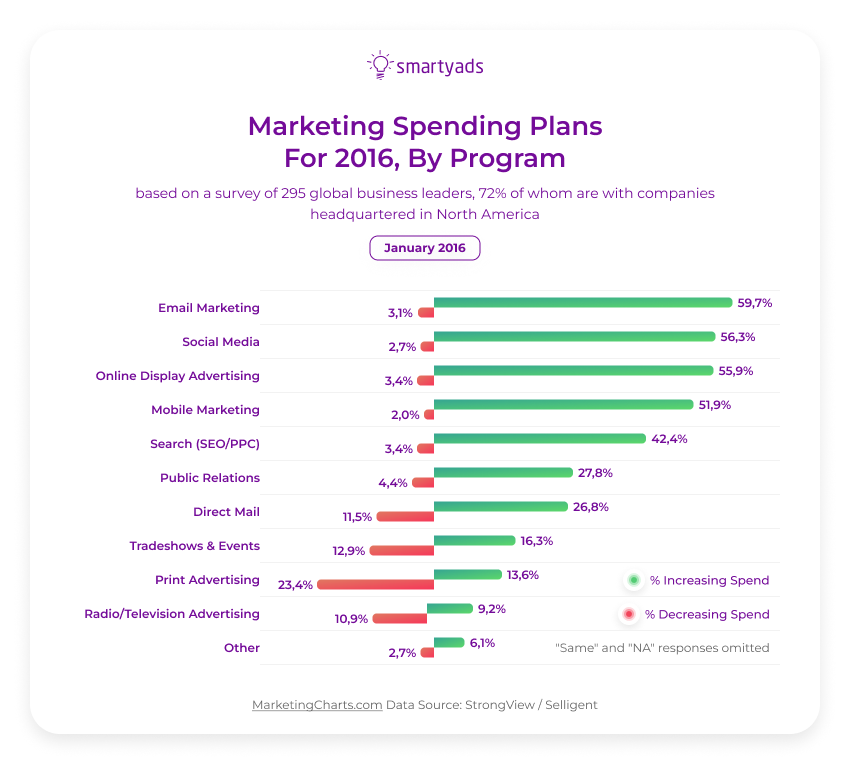
Moreover, email marketing is one of the most popular forms of advertising for businesses across many industries. It is the tried and true digital marketing channel with an average return of $36 for every $1 spent.
It is not without reason, as HubSpot reports that over 90% of clients prefer to hear from businesses by email.
In particular, email is an especially great form of advertising for a business specialized in arts, entertainment, real estate, human resources, legal, and construction industries, as they receive the highest open and click-through rates compared to other verticals.
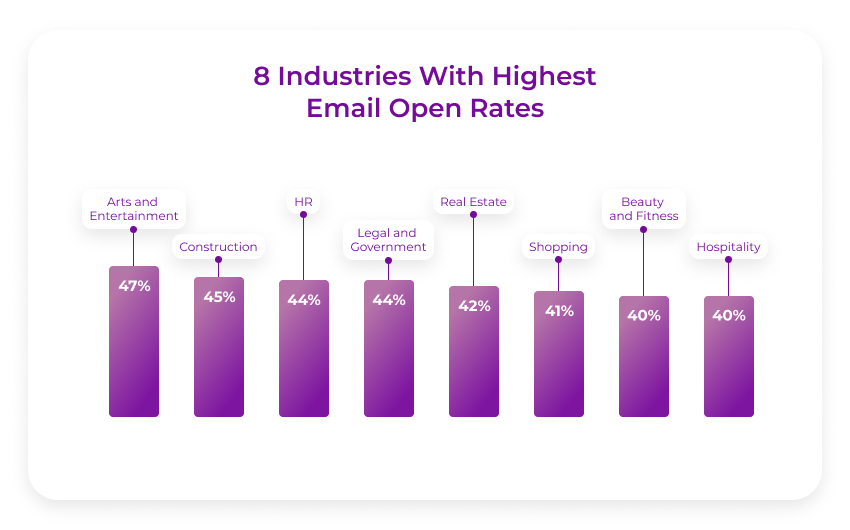
Email marketing helps you to build long-term relationships with prospective customers. It enables you to place visitors who are not ready to purchase into a funnel that keeps them engaged with your business rather than letting them forget about you.
You'll need a mailing list and some creativity to launch such a campaign.
If you don't have such a list, it is time to start building one. Try offering some value to new customers in exchange for their emails.
It could include special discounts, exclusive offers, or additional information. This choice mainly depends on your products' specifics and your audience's interests. Typically, digital marketing information products serve this purpose the best.
Then, create a series of emails designed to introduce the new lead to your offer, establish your industry authority, and provide educational value on related topics of interest.
While advertising for business, apply the chosen email strategy but don't forget about the following:
- Don't annoy prospective customers with too many emails — you want to keep them informed, not irritated;
- Optimize for mobile. Almost 81% of users read email on mobile devices, and you certainly don't want to lose those;
- Use audience segmentation and targeting solutions in advertising and email alike. Personalized emails are 75% more likely to be opened compared to non-personalized ones;
- Use a call-to-action button in email signatures. In this way, you can introduce your products and services to potential customers.
For instance, you can set something like this via your email client.
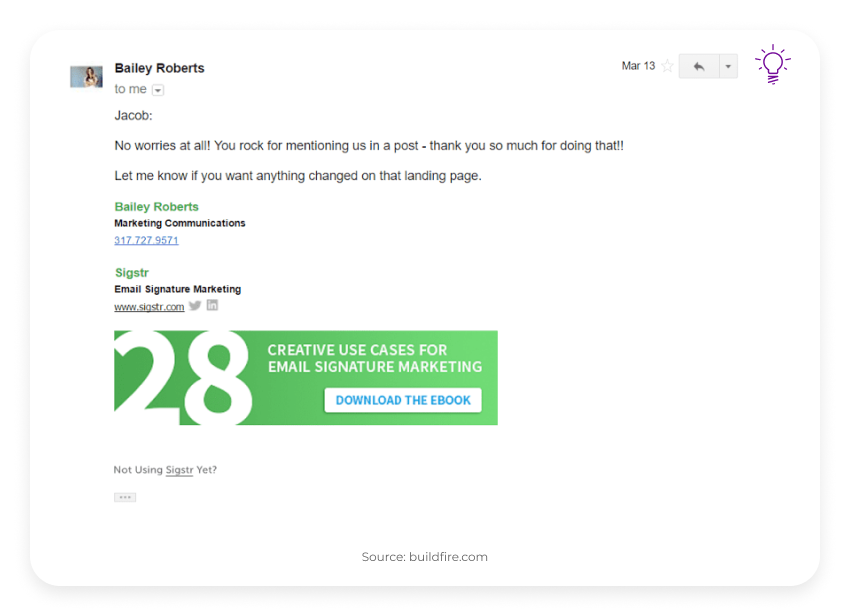
Notice how this call to action stands out and grabs attention.
The best way to capitalize on email CTAs is to provide a lead magnet or complimentary offer that will stimulate the interest of your relevant audience and drive them forward in your funnel.
Tip #3: The best way to advertise is through your website
You might have noticed that we've mostly discussed how to promote your business by launching campaigns on outside channels. But now it's time to ask yourself, "How can I advertise my business apart from those ways?" The answer is simple — build a website.
There are plenty of reasons why having a professional website is essential (especially for local businesses' advertising). Still, perhaps one of the most important among them is that your website is practically your face in the online world.
With this asset, you can inform any visitor at any time about your company, products, and services, how to get them, and why your mission is important.
Moreover, you can use it as another channel to promote your business. Having a website provides you with lots of new opportunities, one of which is content marketing.
How does it work? Let's explore the initial steps:
1. Create the website
There are many templates and even content management systems (CMS) that allow you to build a website and customize it to your needs.
Some are oriented toward beginners; others are more advanced, so that you can choose one depending on your skill and resources.
Another important point is that most are outrageously inexpensive and even free, so you don't have to spend tons of money; instead, you can invest in website design and content.
2. Content generation
Here are some tips:
- Tell your clients about the problems you solve, educate them on your products, and share tips about your industry — the more value you provide with your website, the more likely the people will actually return to you;
- Another nice practice is to ask your clients for help — user-generated content is reported to be 50% more trusted among Millennials and 35% more memorable;
- Involve your co-workers in the process — let them share stories and pictures about how their work is going so that interested clients can see the process from backstage;
- Monitor your competitor's marketing efforts — this kind of analysis can give you lots of valuable insights on how to promote your business and what practices to avoid;
- Consider hiring a freelancer or a marketing agency if you don't feel like creating a website on your own.
3. Website optimization, implementing SEO
The best way to promote your business is to make it visible. Your content can only bring value if someone actually finds it, so be sure that search engines are familiar with your website.
There are plenty of tools and plugins around the web to help with this, many of them even built-in to the CMS platforms.
You can also hire a freelancer to perform search engine optimization and increase the visibility of your website.
Finally, don't forget about mobile — your SEO efforts won't make much sense if mobile users will only find that your website is impossible to navigate.
SEO (Search Engine Optimization) helps the business to get free, organic website traffic.
It aims to boost your website's position in search results pages. Remember, the higher the website is listed, the more people will see it.
Moreover, Google has excellent location-based results; you have a chance to show up on the first page of Google without spending a dime.
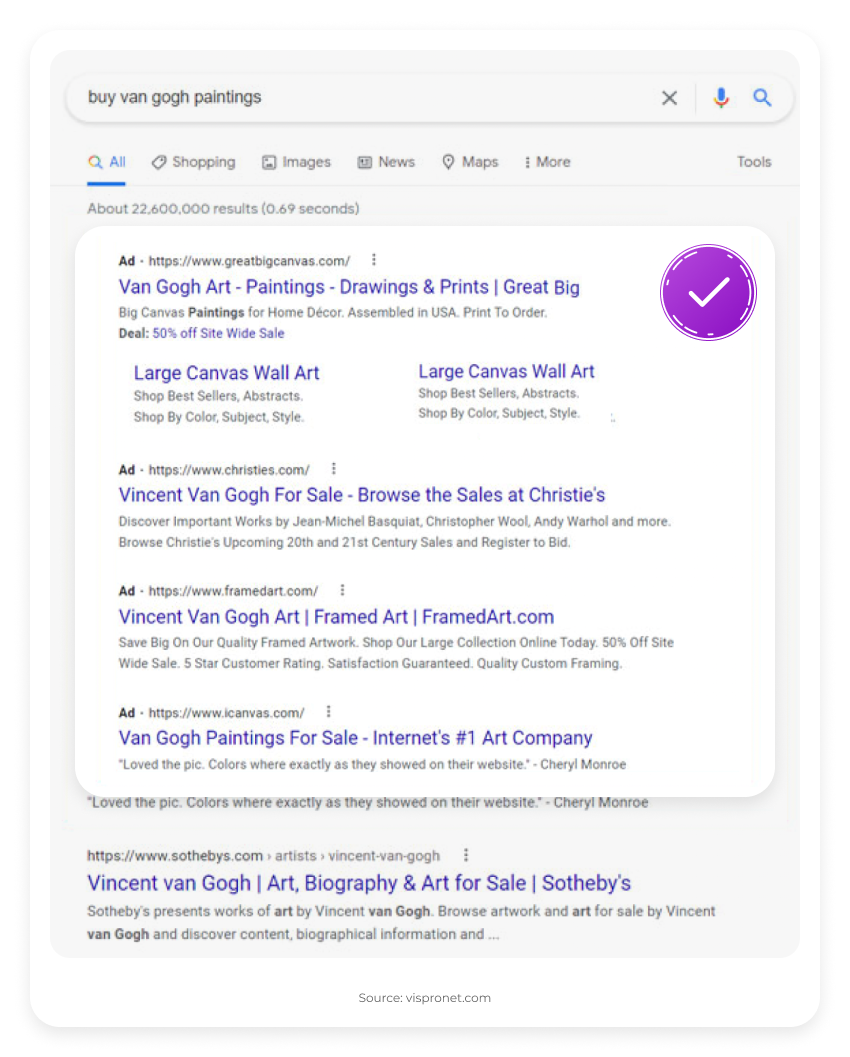
SEO strategies to promote your business include the following:
- Adding relevant keywords to specific places on the website;
- Creating high-quality content with relevant tags for images;
- Maintaining page load speeds and security at a high level.
When your business ranks highly in Google search results, Google is essentially promoting it for you — and not just to anyone, but specifically to people who are looking for what you offer.

4. CTA (Call-To-Action) to the posts
Don't forget to add CTA to your post so that your website works as a source of information and a powerful tool for sales and conversions. You can also engage users to subscribe to your newsletter, which is a good starting point for building your email marketing strategy.
Tip #4: Use Content Marketing
Using content to promote your company is always part of a great Search Engine Optimization strategy. But it is much more than using the right keywords.
Your brand builds identity, personality, and authority by producing relevant, useful, and attractive content.
Content marketing involves planning and sharing posts, articles, news, videos, and any sort of subject that talks directly to your audience.
This kind of marketing isn't only about information but also about timing and presentation. What, how, and when you write are points to consider.
How small business owners can do it:
- For small service and eCommerce companies that can't invest in sheer volume, the center of the strategy should be a blog;
- You can share how-to guides, tips, ebooks, and everything useful to help a lead consider a product you sell;
- Frequency is important, so try to have at least 2/3 blog posts a week. You can use social media to boost your content's reach and mix new pieces with reposts to keep your persona engaged.
But the main thing you should strive for is being honest and offering reliable information that helps.
When a brand becomes known as an authority in a specific field, it sticks to the audience's mind. Even if the consumer isn't buying anything now, they will remember you when the time comes in the future.
Tip #5: Invest in your visuals
The importance of visuals is hard to overestimate, as it literally defines whether your message will be delivered and understood correctly.
According to a study, 90% of the information transmitted to the human brain is visual, and we can process visual information 60,000 times faster than text.
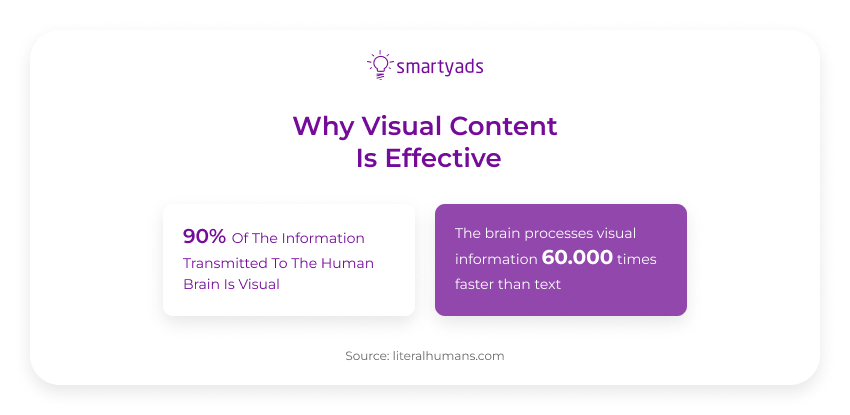
When searching for the best form of advertising for small businesses, look at your creatives.
A high-quality and engaging creative can sometimes convince even the most skeptical user. And if all the visuals within your advertising strategy are in line with each other, your campaign is bound to succeed. Let's review some of these elements in more detail.
Ad formats
Besides using good old banner ad formats, experimenting with more engaging formats is often a good idea. The best-performing ones currently include native advertising, rich media, and video, but be sure to explore other ones as well.
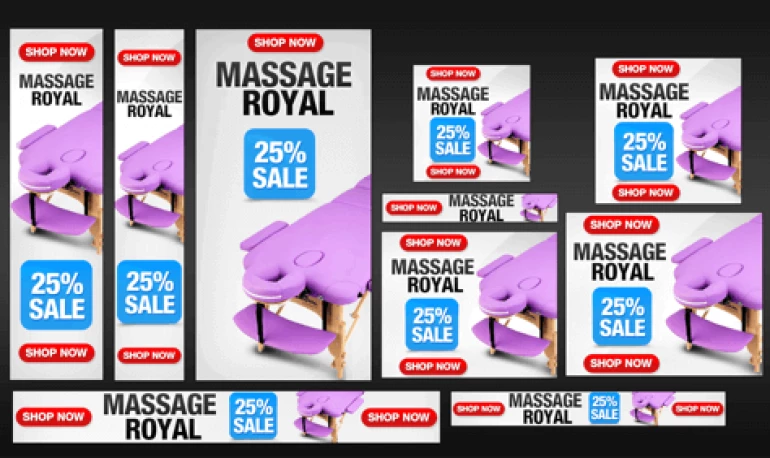
Preferences for different digital ad formats can vary depending on geographical region and business verticals, so advertising small businesses is by no means a predictable process.
Nevertheless, once you've got a good understanding of your audience, finding the right business advertising format shouldn't be a problem.
Brand image
As we've already mentioned, consistency is important. Studies show that 77% of customers stay loyal to brands, so an established company must have a clear and steady identity.
Make sure that you have a distinct and recognizable brand image that reflects your company's mission. One way to achieve this is to ensure that your logo, website, creatives, and other visuals correspond.
This can be accomplished by using a common topic or a specific color scheme, anything that highlights your brand among hundreds of others and, at the same time, underlines its integrity.
A professionally looking creative immediately hints to your customers that you take your work seriously, so your products and services must be of high quality too, and this is exactly the message you want to send, don't you?
Mobile advertising
Whether we are talking about your website, ad creatives, logo, email newsletter, or any other form of advertising — it must be optimized for mobile.
A negative mobile experience can distance you from prospective customers, which is proved by numbers — 52% of people won't even engage with the company because of this.
On the other side, US mobile ad spend is estimated to reach around $235,7 billion by 2025, so now is a perfect time to start advertising business with mobile formats.
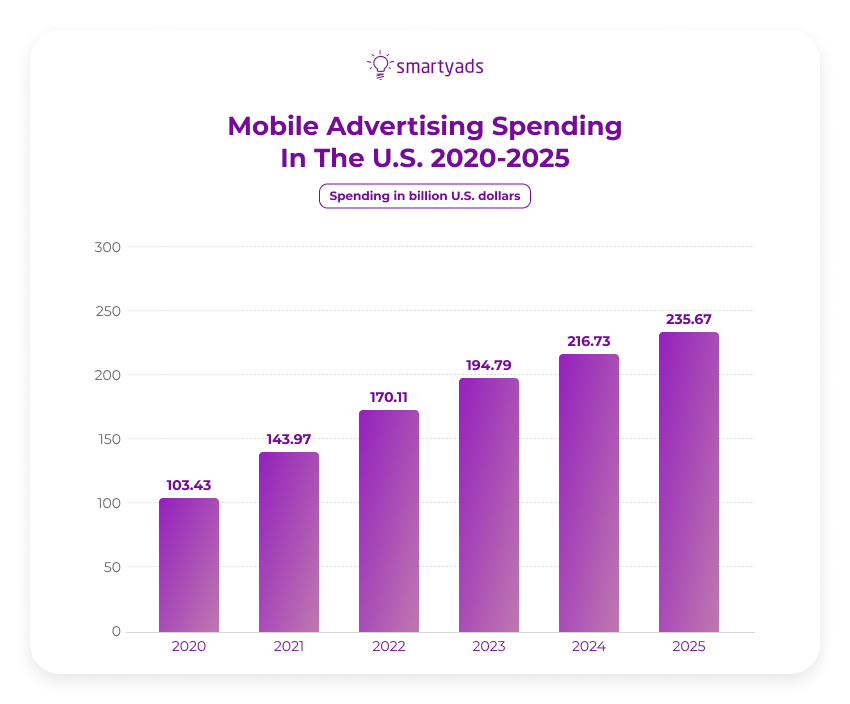
Tip #6: Create and verify your Google Business Profile
It may seem very obvious, but frequently small business owners haven't heard about Google Business Profile.
A verified Google Business Profile may be one of the small businesses' most powerful online marketing tools. It has been rebranded many times — from Google Business Page to Google My Business to Google Places — but it offers many features (posts, descriptions, photos, labels, etc.) and is still completely free.
Listing your website on Google via Google My Business will boost your visibility locally.
When someone searches for something related to your business near your location, it will appear in Google Maps. New customers can view images of your building and products or services, client feedback, website links, business hours, etc.
To build credibility, you should also verify your Google listing.
When you have a Google profile, your business will be advertised to people in your area without your participation.
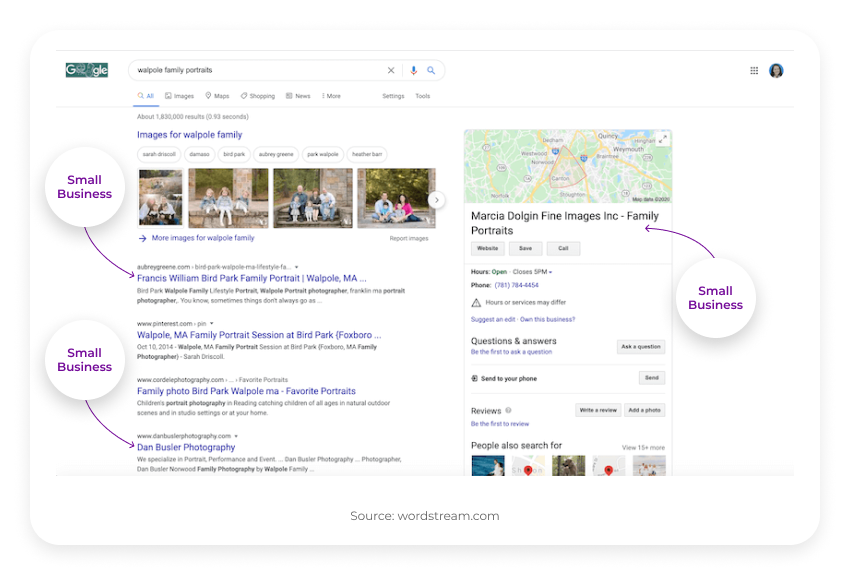
Tip #7: Run Ads on Google
In 2022, search advertising spending in the United States was projected to amount to $95.2 billion out of over $280 billion of total online media advertising spending.
SEO is one of the most effective marketing strategies, but it is a long way that can take months to produce results. If you have a budget and want quicker results, Google Ads is the best way to go. They appear at the top of search engine results pages, above organic results.
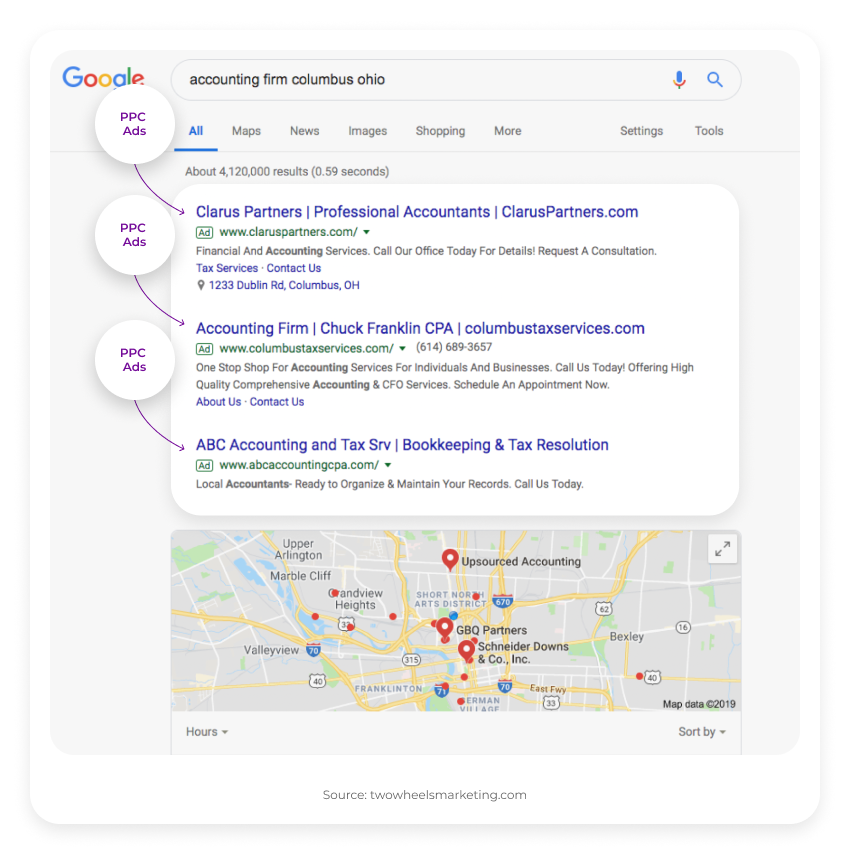
Although mastering Google Ads takes some time, a well-optimized Google Ads campaign can provide a significant return on investment for businesses.
Ads on Google provide businesses with two primary advertising options: text ads on the Search Network or branded banner ads on the Display Network. Text ads on Search Network appear at the top or bottom of the search results page when users search for specific keywords related to your business. Branded banner ads on the Display Network, on the other hand, appear on various websites across the Internet that are part of Google's Display Network.
By choosing the right type of advertising and optimizing your Google Ads campaigns, you can effectively connect with your target audience and achieve your advertising goals.
Tip #8: How to promote your business on social media
Social media marketing is a strong tool for connecting with new and existing customers.
You can establish relationships with new customers through personal and professional platforms like Facebook, Instagram, LinkedIn, etc.
Below you can find some tips:
- Utilize social media platforms to network with people who share similar interests;
- Follow industry leaders and interact with their posts;
- Publish relevant content that professionally showcases your company;
- Pay attention to current trends;
- Your employees can share positive things about the company on their personal social media accounts and grab the attention of potential customers.
We are not suggesting that you adopt every viral meme (in fact, please refrain from adopting every viral meme).
However, it is recommended to pay attention to social media trends to understand what people seek when they visit social channels. It allows you to create relevant content that retains its value over time.
Tip #9: Targeting is the key to advertising a small business
Don't forget about targeting and retargeting.
Find out how retargeting works in the picture below.
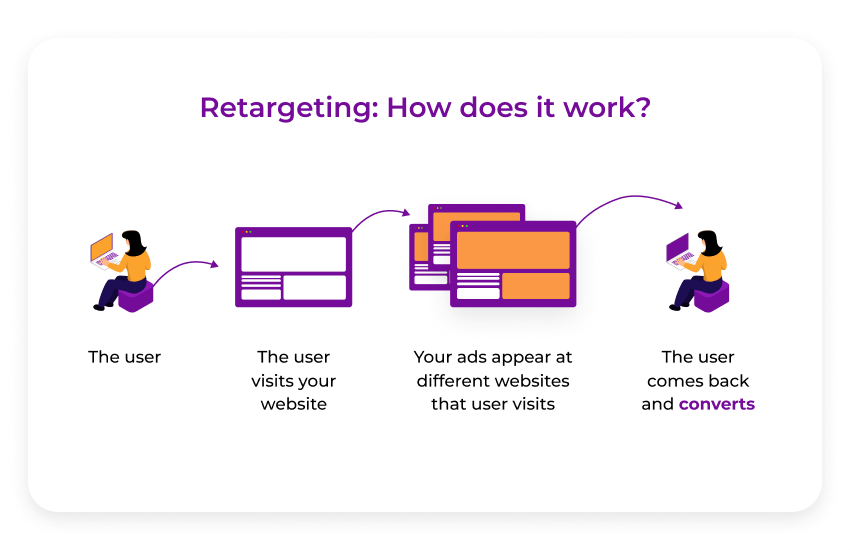
Whether you aim to promote your business through emails, banners, or a social media platform — targeting is the key. Who are your customers, and what are they searching for? You should be able not only to answer these questions but also to make use of these answers. Create buyer personas to make the process more intuitive.
Consider factors like geographical location, age and gender, interests, online behavior, and even hobbies — all of these are important data when it comes to understanding your customers. The more knowledge you gather, the more precise your targeting will be.
Once you've got the segmentation, develop specific messages for each group of your customers. Those interested in just one of your products are likely to skip an ad about other services, so the more precise and personalized your messages are, the higher the success rate of your marketing efforts.
Tip #10: Utilize TikTok
TikTok remains among the few social media platforms providing powerful organic reach.
Small businesses can create content showcasing behind-the-scenes or product reviews to boost their brand without any significant investment.
Many brands on TikTok engage with their followers by tagging current and new customers in videos where they prepare specific orders or seek feedback on the type of content they prefer to see.
Even established brands with an audience that extends well beyond Generation Z are experimenting with this platform.
@washingtonpost The Lower 48 states are seeing the coldest temps of the season so far due to a blast of Arctic air âÂÂÂÂÂÂÂÂï¸Â #winteriscoming #winter #snow #coldoutside ⬠original sound - Colin Riggy Rigg
TikTok is an excellent platform for small businesses. Let's take a look at the key benefits of using TikTok:
- Level playing field. It is not necessary to have a large budget to create high-quality content;
- Creativity. You'll do well on TikTok if you're innovative and can think outside the box;
- Viral content. Millions of people can view your content if it is of high quality.
If you are considering using TikTok for your small business, consider the following questions first:
- Have you got time to make TikTok videos? Creating TikTok videos and uploading them consistently takes time, even if you don't need a full production crew;
- Does your relevant audience utilize TikTok? Keep in mind that TikTok's audience tends to be predominantly within the 18-24 age range. Therefore, if you are targeting Generation Z or young Millennials, TikTok should be considered;
- Do you have innovative ideas for video? If you're uncertain about the type of content that would perform well on TikTok, spend some time exploring the app to gain inspiration.
Tip #11: Try an Influencer Marketing Collaboration
According to a study, the influencer marketing industry hit $16.4 billion in 2022.
Moreover, 56% of young Americans have made a purchase after looking at a post from a person they follow. So, influencer marketing can be a highly effective marketing strategy for your brand.
Small businesses can cooperate with influencers in their niche or industry. Influencers with a large follower base help businesses reach a wider audience and boost engagement with their brand.
One of the main benefits of influencer marketing is its affordability. While traditional advertising can be expensive, influencer marketing is often more cost-effective.
In addition to cost-effectiveness, influencer marketing helps your businesses build trust with their audience. Influencers are considered experts in their niche, and their followers highly respect and trust their opinions and suggestions. By partnering with an influencer, the businesses can tap into this trust and credibility to build brand awareness and establish themselves as industry leaders.
To get started with influencer marketing, small businesses should identify influencers in their niche and reach out to them with a specific question and something of equal value in exchange. This could include featuring their product in a post, sponsoring a giveaway, or offering a discount code to their followers.
Before reaching out to an influencer, take the time to familiarize yourself with their accounts across all networks, including commenting on and sharing their content.
Tip #12: Run a webinar
This strategy is effective online and offline. Providing a webinar or workshop can attract your relevant audience and gather their contact information for future marketing efforts.
Some topics that can foster customer engagement are important industry news, strategies for improving some aspect of life or business, and ways to solve common problems.
When you run the webinar, you should do the following:
- Identify where your target audience is online;
- Advertise the webinar on social media platforms using basic advertisements;
- Encourage friends to share it on their social media accounts;
- Require attendees to register with an email address so you can retarget.
Some individuals unable to attend the live event may view the recording afterward. Education is an effective way to introduce yourself to a new group of potential clients.
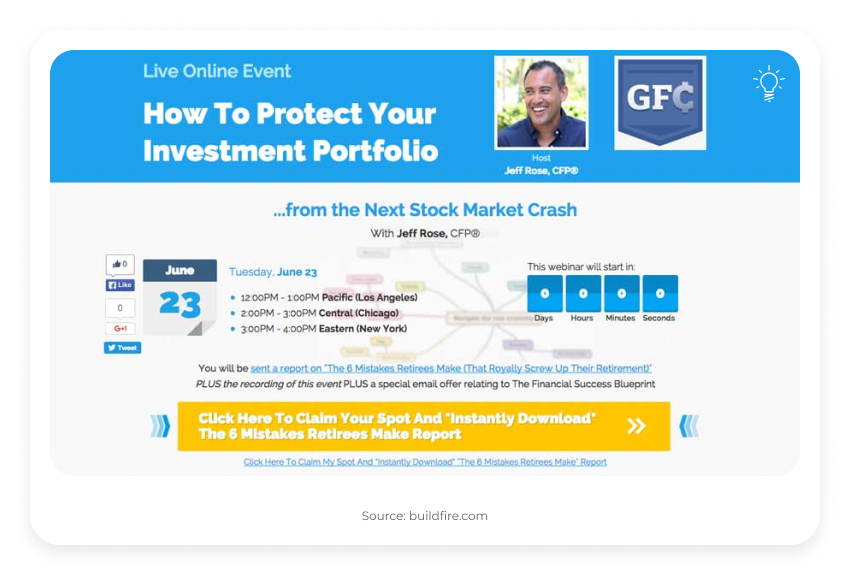
Jeff Rose held a webinar on "How to Protect Your Investment Portfolio".
Tip #13: Network network network
Join Business Organizations
Join professional groups and business organizations in your area. Most of these groups host meetings, industry events, and seminars, providing a great opportunity to network with other business owners and professionals.
You can also volunteer to speak at various upcoming networking events and trade association conventions to exhibit your expertise and increase awareness of your business.
Get known by attending meetings of professional groups such as the Chamber of Commerce, other local business groups, local chapters of national groups such as NAWBO, or civic associations.
People like to do business with people they've met and feel like they know.
Have business cards in a pocket where they are easily reachable. Don't forget to ask what the people you speak with do, and to listen to them. They'll be flattered by your interest and better remember you.
Get Involved in Local Community Events
Small business owners should join local community events and connect with local customers.
You can also host events or giveaways to collect local customers' information and follow up with potential customers for repeat businesses and referrals. For local businesses, the community is a critical component of their success.
Conclusion
Finally, remember that the best way to promote your business is to choose the best platform for it. Make sure that it supports the ad formats you will use, offers you to reach your target audience, and provides you with the necessary range of targeting options.
SmartyAds DSP offers a wide variety of formats, from native advertising to display advertising and video ad formats. Our solution provides high-quality traffic worldwide, and the platform is easy to use, even for a beginner.
Moreover, our newest update enabled plenty of new targeting and retargeting options with laser-like precision to make sure potential customers get your message.
Sign up at SmartyAds DSP and scale your business within months, not years!

